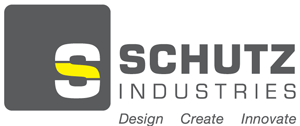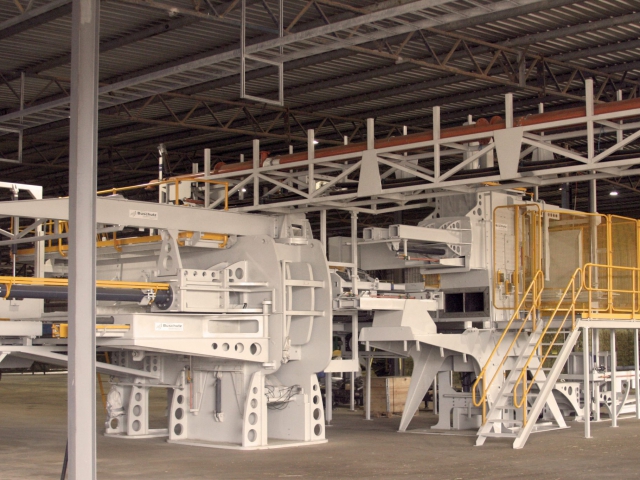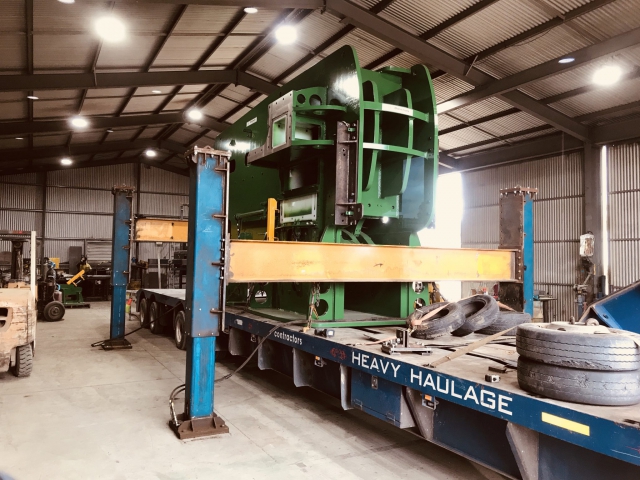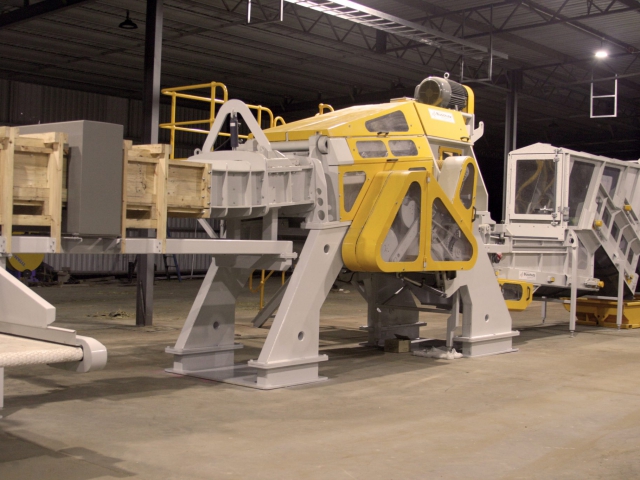HAY PRESS PLANTS OVERVIEW
The export market for quality Australian Oaten Hay, Lucerne and other feed crops has increased dramatically over the years through the use of compacted bales and containers.
The 40′ containers used for exporting goods are allowed 26 tonne net weight so compacted hay helps achieve the desirable container weight for economic purposes.
Schutz Industries has been manufacturing hay compactors and now complete Hay Press Plants for over 20 years.
Early compactors were very simple; they compacted small 355 by 460 by 915mm field bales made by a small square baler. The units conveyed two small bales onto a platform along side of the compactor and it self loaded onto the bed with a compactor cylinder of 100 – 120 tonne pressure that would compact the product to a length of about 500mm. Steel straps were then hand wrapped around the product with the product finally being ejected, this was called ‘Double Dumping’. The compacted bale would weigh around 42 – 50 kgs. These hay compacting plants would use up to 12 personnel.
This method achieved the desired results but was very labor intensive and slow eg. Every ‘Double Dumping’ would take approximately 60 seconds. This would take about 10 hours to fill each container. This proved to be too inefficient.
In the early nineties a system using large square bales was adapted. This meant field baling was more efficient in loading and carrying. The hay compactor had to be redesigned to accommodate the new trends. Schutz Industries decided to produce a range of compactors and equipment to meet these changes.
The large 8’ by 4’ by 4’ bales were teased out through a double conveyor and a teasing head. The conveyors have variable speeds that allowed the product to be blended to customer’s requirements. The material then was conveyed to a baling machine either a small square baler (with the knotters and needles removed), or custom built baling machines. Individual product offshoots such as balers, teaser bed/heads, and small bag press became available.
Finally large Press and Unitizers were added to the line to finally evolve as the Schutz Industries Premium Hay Press Plant (HPP).



